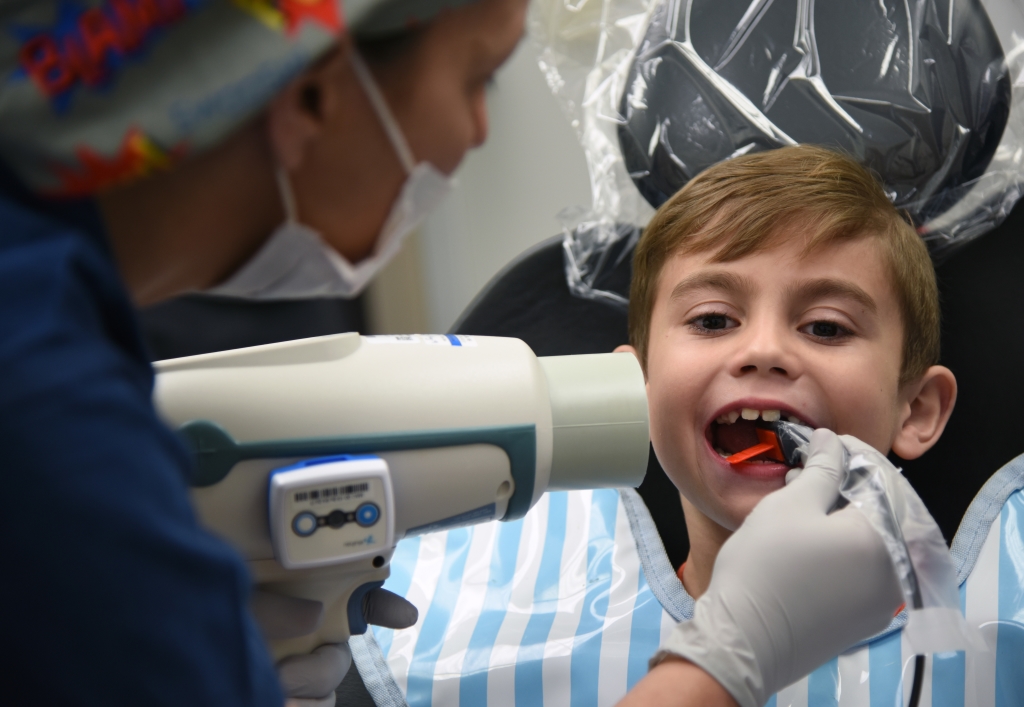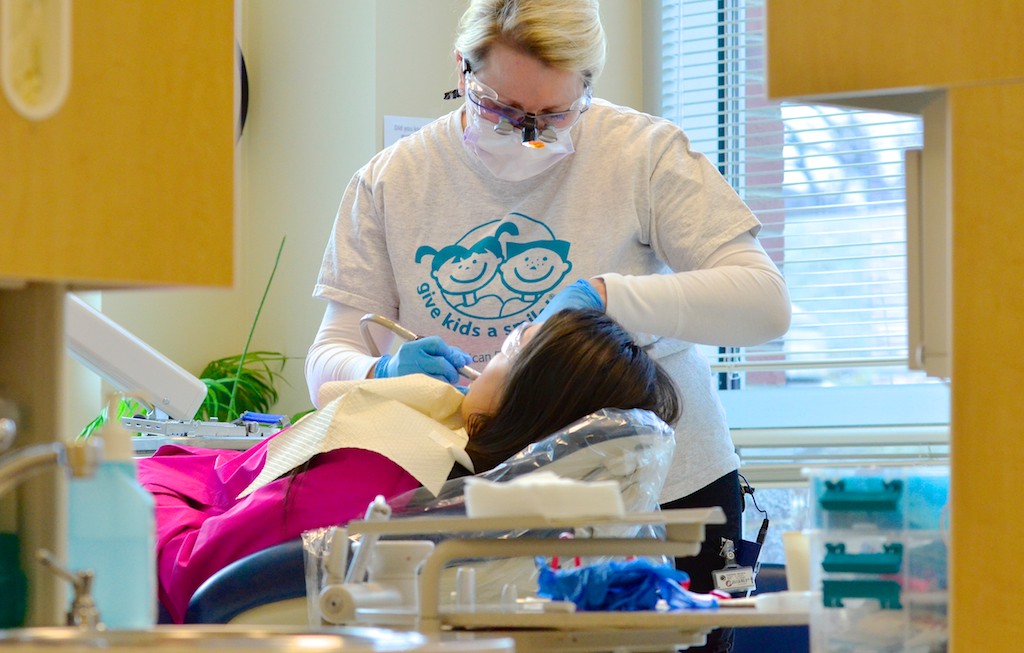One CDC report estimates that one in five children between the ages of 5 and 11 have at least one untreated cavity. In fact, tooth decay is the most common chronic disease for children in that age group. Unfortunately, that means that most kids will get a cavity sooner or later. The good news is that cavities in kids are easily fixed as long as they’re found and treated quickly.
Parents are the first line of defense when it comes to spotting the symptoms of cavities. How a child behaves and visual signs on the teeth themselves can signal when it’s time to get to the dentist. Here’s what to look for:
Visible Tooth Symptoms

Small children don’t have the coordination to brush their own teeth, so parents need to do it for them until they’re able to do it themselves. Ideally, this should start with a soft brush (without toothpaste) as soon as the first teeth come in. As kids learn how to do it themselves, parents should still supervise to make sure it’s done properly. This gives moms and dads the perfect opportunity to keep an eye out for symptoms of cavities.
Cavities first show up as a white spot, brighter than the color of the tooth enamel. Over time, it will turn yellow, then brown. Eventually, a tiny pit that can be seen or felt might appear.
Both discoloration and pitting are symptoms of cavities in kids.
Tooth Discomfort Symptoms
Pain and discomfort are common symptoms of cavities. If a child complains of a toothache or says it hurts to chew their food, it could be a sign of tooth decay. They may also develop a sensitivity to hot, cold, or sweet foods and drinks. If it’s isolated in one spot in the mouth, it’s a good indication that there’s a cavity there.
Parents of small children who aren’t old enough to communicate how they’re feeling can look for changes in their behavior. Loss of appetite, refusing a favorite food, or resisting your attempts to brush their teeth might be a warning that something is wrong. Check his or her teeth for the symptoms mentioned above. Even if you don’t find any visible signs, they could have a cavity.
Cavities Are Easy to Miss

It’s not always obvious that a child has a cavity. There could be visible marks on a tooth, but no discomfort. Or, they could be in obvious pain, but everything looks fine. This can happen if there’s a cavity between teeth where they’re harder to spot.
Cavities start out so small, that there may be no symptoms at all at first. The only way to spot them is with an x-ray. This is actually the best time to find a cavity. Fixing them is easy and quick when they haven’t had a chance to eat away at too much of the tooth’s enamel.
The dentist can find these “invisible” cavities during regular dental checkups. Kids should start seeing the dentist by their first birthday anyway, so hopefully, you’ve already found one they feel comfortable with who can detect them as soon as possible.
Cavities are often missed by parents because they don’t worry much about their child’s baby teeth. Just because they eventually fall out doesn’t mean they are not important. As a child grows, healthy baby teeth are essential for proper development and learning to eat and speak. And they can get cavities just like permanent teeth.
Problems with baby teeth can lead to other dental problems in the future. Parents need to start the routine of brushing and flossing, plus regular dental visits to ensure a healthy mouth.
Fixing Cavities in Kids

The fix for a cavity, even a tiny one, is a filling. Getting a filling right away can stop the decay from spreading any further. A shallow cavity that hasn’t been around long will take far less drilling by the dentist. This is good news for parents of a child who might be frightened of the filling procedure.
Some kids might do better seeing a pediatric dentist if they need a cavity filled. These professionals have additional training in dealing with young patients. Their offices are usually kid-friendly and outfitted with fun decor that includes smaller furniture and dental instruments.
No matter what type of dentist you choose for your child, the important thing is to get cavities fixed right away before they have a chance to get worse or spread. Fixing a bigger cavity or getting multiple fillings will cause your child much more distress.
Preventing Future Cavities
Understanding how kids get cavities can help parents prevent them in the future. Tooth decay starts with the bacteria in the mouth mixing with food and saliva to form plaque. Plaque is a sticky substance that coats teeth and sticks in between them and in their crevasses. If it’s not cleaned off, it will start to eat away at the hard outer enamel of the tooth. This is the start of a cavity.
A child’s diet and eating habits have a lot to do with their likelihood of getting cavities. Sugary foods and soda contribute to plaque buildup. But even foods that seem healthy have a lot of sugar. Fruit juices are a big culprit, as are any kind of carbohydrates, as those turn to sugar. There’s sugar hidden everywhere in today’s diet, even where parents might not expect it. Ketchup, for example, is loaded with sugar.
Letting a child fall asleep with a bottle is a bad idea too. Milk, juice, or even breast milk can sit on the teeth all night, giving the bacteria in them a chance to take hold.
No matter what your child eats or drinks, their teeth can still be protected with good oral hygiene. Brushing thoroughly twice a day, flossing, and keeping well hydrated are good habits that can set them up for a lifetime of healthy teeth and gums.
It’s also important to get them on a schedule of routine dentist visits. Regular checkups will help detect cavities if and when they appear. Professional cleanings and fluoride treatments will keep their smiles bright. The dentist might also suggest dental sealants for your child. Sealants are a plastic-like material that is painted on a cavity-prone child’s teeth. They are a safe and effective way to shield teeth from tooth decay.
Getting a cavity is common for kids and luckily, fixing it is easy. Keep an eye out for symptoms of tooth decay and get your child to the dentist if you see them.


